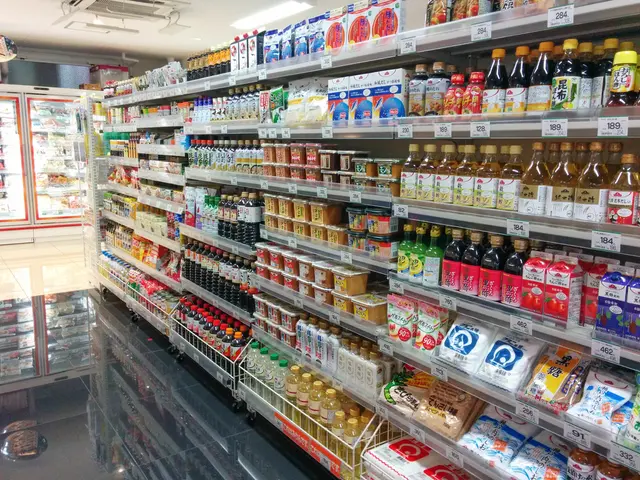EU and Ukraine Navigate Trade Tensions
EU will no longer provide trade assistance for Ukraine.
After midnight CET, the EU has withdrawn the duty-free trade preferences for Ukraine, a move that comes as the country grapples with conflict with Russia for the third year. The European Commission has enacted transitional arrangements until a new trade agreement is forged, a process expected to take some time [1].
Initially, the EU had extended duty-free access to Ukrainian goods around 100 days post Russia's invasion in 2022, hoping to bolster Ukraine's economy. However, the EU tightened import rules for certain food items last year, causing unrest among farmers, particularly in the eastern parts of the EU, who felt the duty-free access provided unwarranted competition [2].
As of midnight, the EU has re-implemented quotas for Ukrainian products, retracting to a system based on a 2016 agreement. Until the end of 2025, 7/12 of the annual quantities laid out in that older trade agreement will be available [3].
The European Commission is actively pursuing a new trade pact that addresses European farmers’ concerns and those of some member states. However, the chairman of the European Parliament's trade committee, Bernd Lange (SPD), has criticized the lack of a timely resolution to alleviate the tension before the trade preferences expired, calling it "inacceptable" [2].
A Fresh Slate and Continued Negotiations
Since the expiration of the trade preferences, negotiations are ongoing between the EU and Ukraine to arrive at a long-term agreement that reconciles both parties' demands. Ukraine is pushing for increased quotas in comparison to pre-war levels given the significance of agriculture in its exports [3].
The EU aims to strike a balance between protecting European farmers from low-cost imports and maintaining favorable trade conditions for Ukraine. Some products, like sugar, may see significantly higher quotas than pre-war levels [3].
Enrichment Data:
Background and Previous Agreement
- Expired Duty-Free Trade: The EU had provided Ukraine with duty-free access for nearly three years, leading to a significant increase in Ukraine's exports to the EU, doubling from $2.3 billion in 2021 to a higher level by 2024 [2].
- Reinstatement of Tariffs: The EU has reinstated tariff quotas on Ukrainian agricultural exports, effectively revertng to pre-war trade levels [2].
Current Negotiations
- Ongoing Discussions: The European Commission and Ukrainian officials are in active talks to find a balanced agreement that addresses EU farmers' concerns and Ukraine's need for favorable trade conditions [1][3].
- Seeking Increased Quotas: Ukraine is advocating for increased quotas compared to pre-war levels [3].
- EU's Position: The EU is attempting to strike a balance, with some products, like sugar, potentially benefiting from significantly higher quotas than before the war [3].
Future Outlook
- Transitional Arrangements: The EU has adopted temporary measures as a stopgap until a revised agreement can be finalized, providing a degree of stability but falling short of the definitive nature of previous arrangements [1].
- Objective: Both sides are seeking predictability and a stable trading framework. The European Commission is working to establish a long-term agreement under the Deep and Comprehensive Free Trade Area (DCFTA) [1][5].
- The ongoing negotiations between the EU and Ukraine aim to craft a long-term agreement that caters to both parties' interests, with Ukraine pushing for increased quotas for agricultural exports, particularly significant in their general-news sector.
- Amidst these discussions, the European Commission is aspiring to strike a balance in finance and business, safeguarding European farmers from low-cost imports while ensuring favorable trade conditions for Ukraine, as seen in the potential higher quotas for products like crime-and-justice-related sugar.
- In the realm of politics, the chairman of the European Parliament's trade committee, Bernd Lange, has criticized the delayed resolution to alleviate tensions before the previous trade preferences expired, highlighting the need for a timely and acceptable new agreement.




